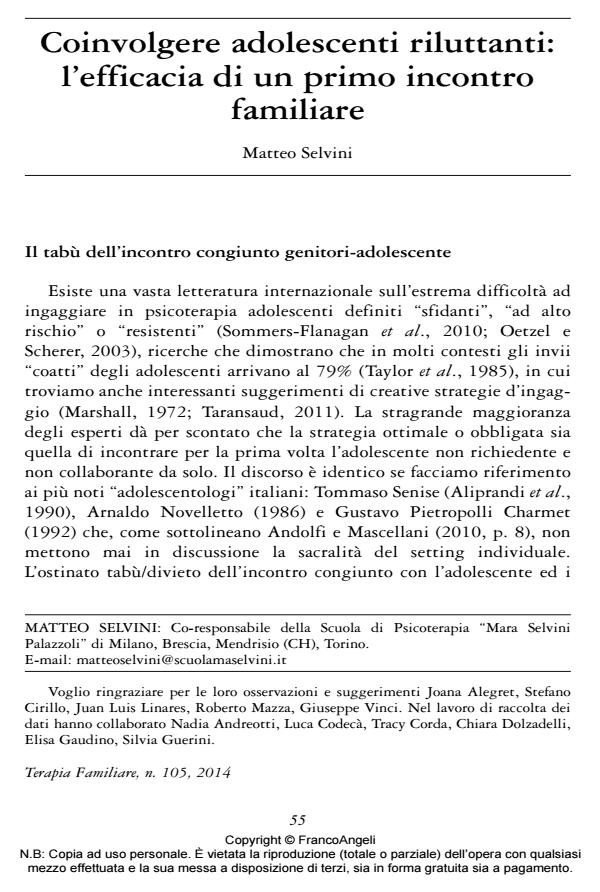Coinvolgere adolescenti riluttanti: l’efficacia di un primo incontro familiare
Journal title TERAPIA FAMILIARE
Author/s Matteo Selvini
Publishing Year 2014 Issue 2014/105
Language Italian Pages 21 P. 55-75 File size 102 KB
DOI 10.3280/TF2014-105003
DOI is like a bar code for intellectual property: to have more infomation
click here
Below, you can see the article first page
If you want to buy this article in PDF format, you can do it, following the instructions to buy download credits

FrancoAngeli is member of Publishers International Linking Association, Inc (PILA), a not-for-profit association which run the CrossRef service enabling links to and from online scholarly content.
Following a research on 179 cases assessed in the last 8 years the author discusses the efficacy of an introductory familiar meeting in order to involve into treatment non requiring teen agers, which means nearly all the teen agers that come in contact with a psychotherapist. After describing nine kinds of non- cooperative teen agers and two cooperative ones, the guidelines and the taking charge techniques are dealt with, from the first contact to the first/second family meeting: safety of the meeting, emotional implications, authority of the therapist, psychological explanations, sharing of personal stories, rebuilding of membership.
Keywords: Forced charge, to oppose the parents’ delegation, safety area, to accompany the teen ager, to invent a new definition of the problem.
- Verso un modello evolutivo individuale/sistemico dei disturbi della personalità Matteo Selvini, in PSICOBIETTIVO 2/2014 pp.46
DOI: 10.3280/PSOB2014-002004 - Le ragioni di una terapia con i soli genitori quando la domanda riguarda i figli Flavio Ravasio, in TERAPIA FAMILIARE 115/2017 pp.9
DOI: 10.3280/TF2017-115002 - Clinical Interventions in Systemic Couple and Family Therapy Matteo Selvini, pp.63 (ISBN:978-3-319-78520-2)
Matteo Selvini, Coinvolgere adolescenti riluttanti: l’efficacia di un primo incontro familiare in "TERAPIA FAMILIARE" 105/2014, pp 55-75, DOI: 10.3280/TF2014-105003